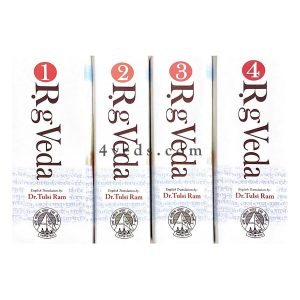Yajurveda which has its literal meaning as, “Yaj jus” as Worship, and “Veda”, means knowledge. It is considered as the sacred text of religious worshipping knowledge which is available in prose style for all the priests and those having the ancient knowledge of Hindu philosophy and prayers.
One of the sacred books of classic Hindu religion called 4 Vedas, Yajurveda is one of the imperative religious texts which is extensively used while chanting sacred mantras or prose. It contains an extensive list of mantras for priests to recite at the time of performing a particular ritual.
Over here, we will into the detailed structure of Yajurveda, its composition, what it was written, and inside details regarding the religious text.
Literal Understanding of Yajurveda
The ancient level Vedic Sanskrit text which dates back to the ancient time has no such particular date of formation. Still, it has been considered that the sacred text was framed between 1200 to 800 BCE with other contemporary religious texts like Samaveda and Atharvaveda.
Talking about the composition of Yajurveda, it is broadly classified into two groups, namely, black or dark which is Krishna Yajurveda. And, the other part is white or bright and better categorized as Shukla Yajurveda.
In reality, the black or Krishna Yajurveda text has an unclear, un-arranged, and motley collection of information for performing various religious rituals. On the other side, the white or Shukla Yajurveda text has a clear, refined, and structured form of prose for performing different religious rituals too.
Now, coming to the black or Krishna Yajurveda, has four recensions, while the white Yajurveda has two recensions that have now survived during the modern-day time. If we look at the ancient layer of Yajurveda Samhita then it contains 1,875 verses that are distinct and build upon the verses found in Rigveda.
There is a middle layer of the sacred text which is called Satapatha Brahmana which is one of the largest Brahamana texts found in the Vedic collection. Even the youngest layer of Yajurveda religious text has a wide collection of Upanishads and influential information related to various schools of Hindu philosophy.
What is the Historical Context of Yajurveda?
If we talk about the historical facts of Yajurveda, related to its composition, then this important information is for you. The core text of Yajurveda falls within the Classical mantra period of Vedic history and that too at the end of millennium BCE. It is younger than the Rigveda and dates back to the consensus of Atharvaveda hymns to the early Indian Iron Age. It is after 1200 and before 800 BCE.
Different Texts of Yajurveda
Now, we come to the stage of looking at the textual composition of Yajurveda in the slightest detailed manner.
Recensions
The Yajurveda text has Shukla Yajurveda that includes 16 different recensions which are known to the world. The Krishna Yajurveda has a total of 86 recensions. Among all these only two recensions and that too from Shukla, Yajurveda has survived that include names like Kanva and Madhyandina. These two are the only text known to the modern-day world today. In contrast to the recensions of Shukla Yajurveda, the four remaining recensions of Krishna Yajurveda are altogether different.
Shukla Yajurveda
The Samhita in the Shukla Yajurveda is known as the Vajasaneyi Samhita. The name Vajasaneyi is gotten from Vajasaneya, the patronymic of Yajnavalkya, and the author of the Vajasaneyi branch. There are two (almost indistinguishable) enduring recensions of the Vajasaneyi Samhita (VS): Vajasaneyi Madhyandina and Vajasaneyi Kanva.
The lost recensions of the White Yajurveda, referenced in different texts of old India, incorporate Jabala, Baudhya, Sapeyi, Tapaniya, Kapola, Paundravatsa, Avati, Paramavatika, Parasara, Vaineya, Vaidheya, Katyayana, and Vaijayavapa.
Krishan Yajurveda
In Krishna Yajurveda, only four surviving recensions are present at the moment. It includes names like Taittiriya Samhita, Katha Samhita, Maitrayani Samhita, and Kapisthala Samhita. As you already know the fact that Krishna Yajurveda has a total of 86 recensions and the majority of them have been lost.
The most popular and best-safeguarded of these recensions is the Taittirīya saṃhitā. Some property it to Tittiri, an understudy of Yaska and referenced by Panini. The text is related to the Taittiriya school of the Yajurveda and ascribed to the understudies of sage Tittiri (in a real sense, partridge birds).
The Maitrayani saṃhitā is the most seasoned Yajurveda Samhita that has endured, and it contrasts generally in content from the Taittiriyas, just as in some various courses of action of parts, yet is significantly more nitty-gritty.
The Kāṭhaka saṃhitā or the Caraka-Kaṭha saṃhitā, as per custom was assembled by Katha, a devotee of Vaisampayana. Like the Maitrayani Samhita, it offers a significantly more definite conversation of certain customs than the more youthful Taittiriya Samhita that regularly sums up such records.
The Kapiṣṭhala saṃhitā or the Kapiṣṭhala-Kaṭha saṃhitā, named after the sage Kapisthala is surviving just in some huge sections and altered without emphasizing marks. This text is basically a variation of the Kāṭhaka saṃhitā.
Each provincial version (recension) of Yajurveda had Samhita, Brahmana, Aranyakas, Upanishads as a component of the text, with Shrautasutras, Grhyasutras and Pratishakhya connected to the text. In Shukla Yajurveda, the text association is something very similar for both Madhayndina and Kanva shakhas. The texts connected to Shukla Yajurveda incorporate the Katyayana Shrautasutra, Paraskara Grhyasutra and Shukla Yajurveda Pratishakhya. In Krishna Yajurveda, every one of the recensions has or had their Brahmana text blended into the Samhita text, in this manner making a diverse of the composition and refrains, and making it indistinct, confused.






